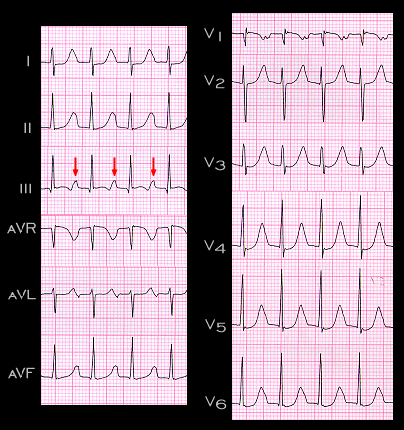The electrocardiographic diagnosis of the atrial tachycardias, be they sinus or ectopic, is more difficult when the P waves fall on the preceding T or U waves. This may occur because of the rate itself, because of a prolonged PR interval and/or because of a prolonged QT/U interval.

This ECG from a 31 year old female. The rate is about 140/min (RR interval = 0.42 sec). The P waves appear to be upright in leads I, III and negative in aVR, indicating their sinus origin, but they are not obvious in these leads because they are superimposed on the T waves. They are best seen in lead III (arrows) where they are also upright but where they are superimposed on an inverted T wave.. Note that in lead V1, only the negative component of the P wave is obvious. The PR interval is at the upper limit of normal, measuring about 200ms (0.20 sec) and the QT interval, while difficult to measure accurately, appears to be in the range of 360 ms (0.36 sec). When corrected for rate by the Bazett formula, the QT interval exceeds 500 ms and is prolonged. The rhythm in this ECG could by mistaken for an AV nodal tachycardia if the P waves were not identified. The key to its correct diagnosis is to note the distortion of the T waves and to recognize that it is caused by the superimposition of the P waves.
